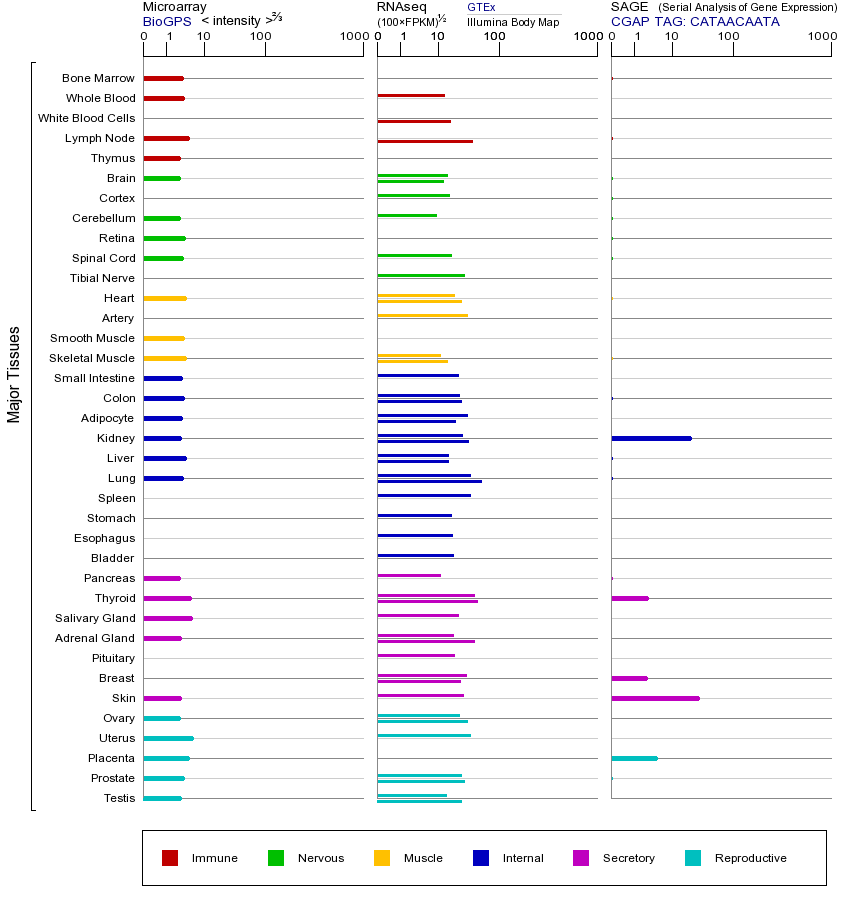CMAHP (cytidine monophospho-N-acetylneuraminic acid hydroxylase, pseudogene)
- symbol:
- CMAHP
- locus group:
- pseudogene
- location:
- 6p22.3
- gene_family:
- alias symbol:
- None
- alias name:
- None
- entrez id:
- 8418
- ensembl gene id:
- ENSG00000168405
- ucsc gene id:
- None
- refseq accession:
- NR_002174
- hgnc_id:
- HGNC:2098
- approved reserved:
- 1998-12-22
CMAHP(羧甲基氨基己糖磷酸合酶)是一种参与糖代谢的酶,属于氨基糖代谢途径中的关键酶。它主要催化羧甲基氨基己糖-1-磷酸(CMAHP-1-P)的合成,这是细菌细胞壁成分肽聚糖合成的前体之一。在人体中,CMAHP的功能与某些细菌感染或代谢紊乱相关,但其具体作用机制仍在研究中。CMAHP的突变可能导致代谢途径异常,进而影响细胞壁合成或糖代谢平衡,但目前尚未明确与特定疾病的直接关联。如果CMAHP过表达,可能会干扰正常的糖代谢途径,导致代谢产物积累或能量供应失衡;而降低表达则可能影响依赖该途径的生理过程,如某些细菌感染时的宿主反应。CMAHP属于氨基糖代谢酶家族,该家族的共性是通过催化氨基糖及其衍生物的代谢反应,参与细胞壁合成、能量代谢和信号传导等生物学过程。这一家族的酶通常在微生物中更为常见,但在高等生物中也可能存在类似功能的同源基因。由于CMAHP的研究相对较少,其详细功能、调控机制以及与疾病的关联仍需进一步探索。目前已知的是,它在某些细菌的生存和致病性中可能发挥作用,因此可能成为抗感染治疗的潜在靶点。
Sialic acids are terminal components of the carbohydrate chains of glycoconjugates involved in ligand-receptor, cell-cell, and cell-pathogen interactions. The two most common forms of sialic acid found in mammalian cells are N-acetylneuraminic acid (Neu5Ac) and its hydroxylated derivative, N-glycolylneuraminic acid (Neu5Gc). Studies of sialic acid distribution show that Neu5Gc is not detectable in normal human tissues although it was an abundant sialic acid in other mammals. Neu5Gc is, in actuality, immunogenic in humans. The absense of Neu5Gc in humans is due to a deletion within the human gene CMAH encoding cytidine monophosphate-N-acetylneuraminic acid hydroxylase, an enzyme responsible for Neu5Gc biosynthesis. Sequences encoding the mouse, pig, and chimpanzee hydroxylase enzymes were obtained by cDNA cloning and found to be highly homologous. However, the homologous human cDNA differs from these cDNAs by a 92-bp deletion in the 5' region. This deletion, corresponding to exon 6 of the mouse hydroxylase gene, causes a frameshift mutation and premature termination of the polypeptide chain in human. It seems unlikely that the truncated human hydroxylase mRNA encodes for an active enzyme explaining why Neu5Gc is undetectable in normal human tissues. Human genomic DNA also shows evidence of this deletion which does not occur in the genomes of African great apes. Nonetheless, the CMAH gene maps to 6p21.32 in humans and great apes indicating that mutation of the CMAH gene occurred following human divergence from chimpanzees and bonobos. [provided by RefSeq, Jul 2008]
唾液酸是参与配体 - 受体,细胞 - 细胞和细胞 - 病原体相互作用的糖复合物的碳水化合物链的终端组件。在哺乳动物细胞中发现的唾液酸的两种最常见的形式是N-乙酰神经氨酸(Neu5Ac)和它的羟基化衍生物,N-羟酸(Neu5Gc的)。唾液酸分布表明的Neu5Gc是不是在正常人体组织中检出虽然它在其他哺乳动物中丰富的唾液酸研究。的Neu5Gc是,实际上,在人类中的免疫原性。的Neu5Gc在人类由于缺少是由于人类基因CMAH编码胞苷酸-N-乙酰神经氨酸羟化酶,负责Neu5Gc的生物合成的酶中缺失。的cDNA克隆获得,发现为高度同源的编码小鼠,猪,和黑猩猩羟化酶序列。然而,同源的人的cDNA从这些cDNA在5‘区域中的92-bp缺失而不同。这种缺失,对应于外显子的小鼠羟化酶基因的6,导致移码突变,并在人体内的多肽链的提前终止。这似乎不大可能,人截短羟化酶基因编码的活性酶解释为什么的Neu5Gc在正常人体组织中检测不到。人类基因组DNA也显示了这种删除,它并不在非洲类人猿的基因组中发生的证据。尽管如此,CMAH基因映射到6p21.32在人类和类人猿表示CMAH基因的突变发生下列从黑猩猩和倭黑猩猩人类分歧。 [由RefSeq的,2008年7月提供]
基因本体信息
CMAHP基因(以及对应的蛋白质)的细胞分布位置:
- 质膜
- 细胞质
- 细胞外
- 高尔基体
- 囊泡
- 细胞骨架
- 内质网
- 细胞核
- 内体
- 溶酶体
- 线粒体
CMAHP基因的本体(GO)信息:
| 疾病名称 | 关系值 | NofPmids | NofSnps | 来源 |
| Cerebrovascular accident | 0.002367032 | 1 | 1 | GAD |
| Typhoid Fever | 0.000271442 | 1 | 0 | BeFree |
联系方式
山东省济南市章丘区文博路2号 齐鲁师范学院 genelibs生信实验室
山东省济南市高新区舜华路750号大学科技园北区F座4单元2楼
电话: 0531-88819269
E-mail: product@genelibs.com
微信公众号
关注微信订阅号,实时查看信息,关注医学生物学动态。







